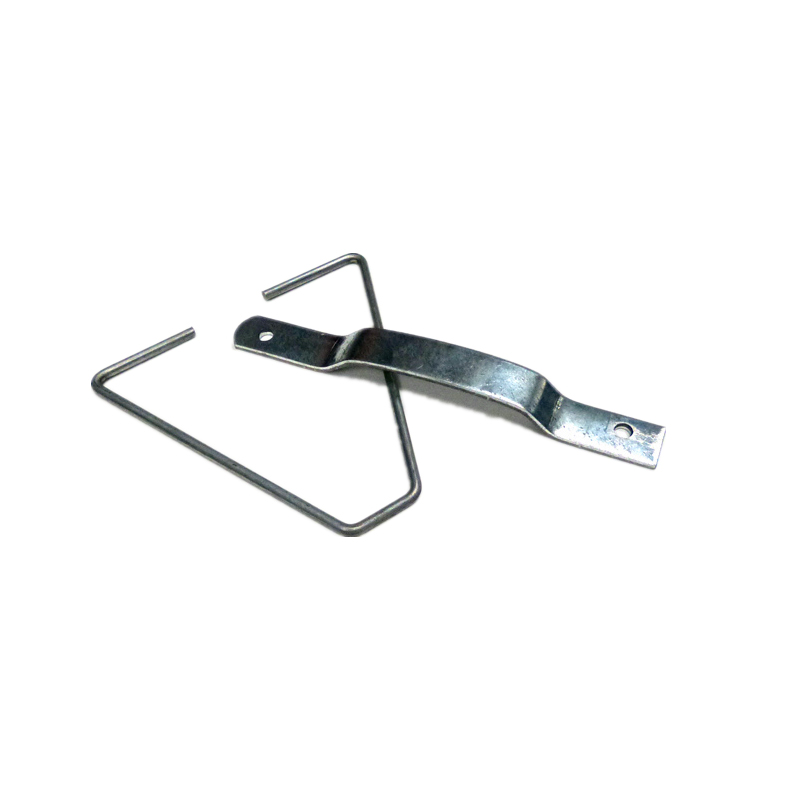
- Mobile Phone
- +8613931874955
- sales@cntcmetal.com
Understanding the Mechanics of Conical Extension Springs in Various Applications
Understanding Conical Extension Springs Design, Functionality, and Applications
Conical extension springs are specialized mechanical devices that play a pivotal role in various industrial and engineering applications. Known for their unique geometric shape that tapers from one end to the other, these springs are designed to handle tensile forces and provide controlled resistance to stretching. In this article, we delve into the design, functionality, and practical applications of conical extension springs, shedding light on their significance in modern engineering.
Design Characteristics
The defining characteristic of conical extension springs is their conical shape, which distinguishes them from standard cylindrical springs. This design allows for a progressive increase in spring rate as the spring is stretched, making them particularly effective in applications where varying levels of resistance are required. The spring’s geometry affects how force is distributed along its length, allowing for smoother operation and reducing the likelihood of coil binding—an issue that can hinder the performance of traditional extension springs.
Typically, conical extension springs are made from high-tensile materials such as stainless steel, music wire, or alloy steel, which contribute to their durability and resilience. The choice of material not only affects the spring's strength but also its resistance to fatigue and environmental factors such as corrosion. Manufacturers can customize these springs by adjusting parameters like wire diameter, coil spacing, and the overall dimensions to meet specific mechanical requirements.
Functionality
Conical extension springs function primarily by storing energy when stretched and releasing that energy when the load is removed. As an external force is applied, the spring extends while maintaining a consistent grip on the load, providing a smooth, controlled motion. The tapering design means that the spring can accommodate different load levels without compromising structural integrity.
One of the key advantages of conical extension springs is their ability to produce a variable load and deflection response. As the spring is extended, the force required to stretch it increases progressively due to the change in coil diameter. This characteristic is beneficial in applications such as automotive suspensions, where the spring can adapt to different road conditions and vehicle loads, enhancing comfort and stability.
Applications
conical extension spring

Conical extension springs find utility in a wide range of applications across various industries. Their ability to provide consistent resistance and adapt to changing loads makes them ideal for
1. Automotive Components In vehicles, conical extension springs are commonly used in suspension systems, throttle controls, and seat mechanisms. Their capacity to handle varying weights and forces helps ensure smooth performance and durability.
2. Industrial Machinery Many industrial machines utilize conical extension springs in assembly lines, conveyor systems, and packaging machinery. They provide tension in belts and chains, maintaining proper alignment and function under varying operational loads.
3. Consumer Products From office chairs that use conical springs to adjust height to toys that require controlled movement, these springs enhance user experience and mechanical reliability.
4. Medical Devices In hospitals and clinics, conical extension springs can be found in devices such as adjustable hospital beds and mobile equipment, where they assist in providing comfort and adjustability to the patients.
5. Aerospace Engineering The aerospace industry makes use of conical extension springs in various components to manage the challenging conditions of flight, including temperature fluctuations and dynamic loads.
Conclusion
Conical extension springs exemplify advanced engineering design and functionality. Their unique shape and adaptability render them essential components in a variety of applications, from automotive to aerospace. As industries continue to evolve and demand more versatile solutions, the role of conical extension springs will likely expand, highlighting their importance in both current and future technologies. By understanding their design, functionality, and applications, engineers can make informed decisions on utilizing these springs effectively in their projects, ensuring efficiency and reliability.
share:
-
Yard Sign Stakes: Reliable Guardians of Outdoor SignsNewsAug.04,2025
-
Wall Ties: Invisible Guardians of Building StabilityNewsAug.04,2025
-
Resilient Web: The Super Guardian Power of Concrete MeshNewsAug.04,2025
-
Masonry Accessories: A versatile assistant on building foundationsNewsAug.04,2025
-
Iron Binding Wire: the 'invisible reinforcement specialist' in the fields of architecture and industryNewsAug.04,2025
-
Dynamic Spring: The diverse functions and excellent performance of Wire Tension SpringNewsAug.04,2025
-
Your Source for Concrete Wall Ties and Masonry AccessoriesNewsJul.10,2025



















